Sales may be THE most important skill for anyone to learn. Why? Because we’re all in the business of selling something, whether we are:
- Convincing our boss we deserve a raise,
- Selling our services to a potential client or
- Marketing a product to the masses.
Many people say The Psychology of Selling by Brian Tracy is a must-read book for sales professionals. After reading it myself, it’s easy to see why!
This book begins with strategies for overcoming our fears of failure and rejection. Then it explains the psychology of why other people buy, so our words can speak directly to their hearts and minds. Finally, there will be plenty of practical tips for exactly what we should say during every step of the sales process.
(Okay, this is starting to sound like a sales pitch itself, so I guess the book must have rubbed off on me!)
Who is Brian Tracy?
Brian Tracy has been one of the biggest names in self development for decades. He focuses on topics like goal-setting, time management and sales training. He’s written many bestselling books and has spoken to large audiences hundreds of times.
When Brian first began publishing, he was selling courses on those old audio cassette tapes! But he’s made the transition to the digital age beautifully, with a highly popular website, Youtube channel and Facebook page.
Without further ado, let’s jump into the first great lesson from The Psychology of Selling…
🔄 1. Copy Success: Simply do what other successful people do
Brian Tracy started his career near the bottom. He didn’t graduate high school, but chose to travel and later got an entry-level sales job. He knocked on doors and was rejected over and over again. He worked very hard from early morning until late at night, but was seeing very little return for his efforts.
One day Brian noticed the most successful sales person in the company didn’t seem to work nearly as hard as him. So Brian asked him how he did it. The successful sales person was very helpful. He explained that he used to work at a Fortune 500 company that had professionally trained him in sales. They taught him many effective skills, like how to put together an effective sales presentation.
Now, Brian didn’t even know what a sales presentation was! But he was eager to learn, and he picked up as many tips from the successful guy as he could. Well, his sales immediately went up. From that day on, he was hooked on learning and self development! He soon found out about the books and courses that teach selling, and he read as many of them as he could.
Eventually, Brian went from being one of the worst sales people in the company, to being a sales manager who trained other new employees how to sell successfully. But the most important lesson he learned was to simply look at what the most successful people are doing, then copy them!
Here is a great rule: “If you do what other successful people do, over and over again, nothing in the world can stop you from eventually getting the same results that they do. And if you don’t, nothing can help you.”
Brian learned that sales is really a collection of related skills. In this way, it’s like golf and many other things. In golf, you can practice and get better at putting, driving and hitting the ball where you want it to go. Well, you can also practice and get better at several key skills that will determine how many sales you make.
These seven key result areas are prospecting, building rapport, identifying needs, presenting, answering objections, closing the sale, and getting sales and referrals.
Brian Tracy was one of the worst salespeople in his company, until one day he asked the most successful guy for help. Brian learned tips that immediately improved his sales. Most importantly, he found out to always emulate the actions of those who are successful in an area.
😊 2. Value Yourself: A positive self-concept greatly improves selling ability
Your self-concept is how you see yourself and your beliefs about yourself. Closely related to it is the idea of self-esteem, which means how much you like yourself. Brian Tracy says all top salespeople have a positive self concept. This gives them the power to be enthusiastic, charming and resilient to rejection—traits which are all are extremely important to succeeding in sales.
Feeling good about ourselves lets us be charming and charismatic. Emotions are often contagious, which means when you feel good, then the other person feels good talking with you. And if you want to make a sale, then it’s usually essential to create that sense of friendliness, rapport and trust.
One of the greatest business books ever is Influence by Robert Cialdini, who is a psychology researcher and university professor. In his book, he explains six scientific principles for getting people to say yes to your requests.
One of these principles is called Liking. Cialdini explains that when we like a salesperson, we’ will more often believe them and want to buy from to them. Research shows liking is increased when we are similar or familiar to another person. Learn more in our summary of Influence by Robert Cialdini.
Being enthusiastic about our product is another incredibly effective technique in selling. This isn’t about faking it, we should truly feel great about the product that we’re selling and really believe it is the best option for the person sitting in front of us. Brian Tracy writes:
The primary emotion in sales success is enthusiasm. Enthusiasm accounts for 50 percent or more of all sales ability. One of the very best definitions of a sale is “a transfer of enthusiasm.”
So how do we build a positive self-concept so we can be more charming and enthusiastic? Brian Tracy offers a couple of classic self-help techniques:
- Mental Rehearsal. Spend some time every day imagining yourself talking to prospects in a relaxed, confident and successful way. Clearly visualize yourself as the type of person you want to be. This technique can be especially useful to boost confidence before a sales appointment. Top athletes often use visualization to improve their performance. We can do it too!
- Affirmations. Say positive statements to yourself throughout the day. When Brian was getting started in sales, he often repeated “I like myself! I like myself! I like myself” to himself 20-50 times throughout the day. He says when you say these kinds of sentences to yourself with emotion, then you feel better about yourself. It’s one way we can pump up our emotions and stay enthusiastic throughout the day.
Your self-concept is how you see yourself. Top salespeople have a positive self-concept which allows them to be charming, enthusiastic and resilient to rejection. You can build your self-concept through techniques like mental rehearsal and affirmations.
👋 3. Face Rejection: The more prospects you meet, the more sales you make
Research shows many salespeople only spend 1.5 hours every day actually talking to prospects. Why? Because it’s emotionally painful to risk rejection! So it’s just human nature to procrastinate work that feels painful. Of course, this leads to poor results at the end of the year. Brian Tracy says:
The fastest way to increase your income is simple. It is the key to success in selling. “Spend more time with better prospects.” This six-word formula is the recipe for high income in every market.
So how do we reduce our fear of rejection and failure? (So we can face more prospects and increase our income.) Top salespeople do it in two ways:
- With a strong positive self concept. When thinks well of themselves, they are much less affected by what other people think. Rejection doesn’t hurt their feelings because they strongly like themselves. (See the previous lesson for the practical tips.)
- By realizing rejection is not personal. People say no for many reasons that have nothing to do with you! Because the product isn’t right for them. Because they had an argument with their spouse. Because they have an automatic sales resistance. Because of a hundred other reasons. Successful salespeople come to terms with the fact rejection is an entirely normal, predictable and inevitable part of selling.
By the way, one of the best self-help books for learning to care less about what people think is called The Four Agreements. In that book, Don Miguel Ruiz explains four rules of living well from the ancient Toltec people. Rule number two is “Never take things personally.”
You see, the ancient Toltecs believed every person is living in their own personal dream. This means anything they say or do is really more about them and their dream than it is about you. The book says, “You are never responsible for the actions of others; you are only responsible for you. When you truly understand this, and refuse to take things personally, you can hardly be hurt by the careless comments or actions of others.” Read more in our summary of The Four Agreements by Don Miguel Ruiz.
Most salespeople spend little time talking to prospects because most of us have a fear of rejection. Reduce this fear with a stronger positive concept of who you are. Also realize rejection is not personal, but simply an inevitable part of selling.
📅 4. Chunk Your Goals: Work backwards from big yearly goals to plan each day’s actions
Top salespeople set goals. From being in contact with over 500,000 sales people around the world, Brian Tracy has noticed that almost all the top ones are avid goal-setters. Rather than just stumbling into work each day, they have specific targets they aim to reach daily, weekly, monthly, quarterly and yearly.
You can’t control whether any one prospect will buy, but you CAN control your actions. For most salespeople, the most important action is how many people you call or reach out to every day. Over time, a greater number of calls will result in more sales.
3 quick tips for setting sales goals:
- Set an income goal 25-50% higher than than your previous highest income. This is large enough to be motivating, without being so huge that it feels overwhelming.
- Write down 100 goals for your life. Every day, spend time imagining and visualizing how you want your life to be. What kind of car, clothes and lifestyle will you have?
- Plan each day beforehand. Work backwards from your yearly income goal. Determine how much money you need to make every month, week and day. Then calculate how many sales calls you need to make each day to hit that daily income goal. Discipline yourself to make this many calls every day no matter what.
Top salespeople set goals. Set an income goal for yourself 25-50% higher than your previous top income, then write down 100 other goals that make you excited. Determine what activities you must do each day to reach your big yearly goals.
🔧 5. Sell Utility: People only care about what your product can do for them
Salespeople often fail to sell because they talk too much about their product, its great features and “high quality.” Unfortunately, the prospect doesn’t care about any of that! They only care about one thing:
What can it do for me?
In other words, what end result will it deliver to them? Any nice features or high quality of your product are only relevant if they deliver some desired end result. Otherwise, they don’t care.
People buy a product when they believe their life will be better off in some way after using it. So if you’re having trouble selling a product, then focus on communicating that you understand their needs and explain how your product will reliably fulfill those needs.
The most common human needs which sell products include:
- Making or saving money.
- Physical and emotional security.
- Being liked, respected or valued by others.
- Being healthy and fit.
- Having love and relationships.
- Moving ahead in our careers.
- Personal growth or transformation.
Your prospects don’t care about your product, they only care what it will do for them. Show them you understand what end result they want, and then explain how your product will deliver that.
🌟 6. Sell Uniqueness: Why should they choose your product over any other?
The next part of sales is about your competition. To make the sale, you need to show the prospect not only how your product will fulfill his needs, but also why he should choose your product over the competition. In essence:
Why you?
The answer to this question is called your competitive advantage. To compete in business, your product must be in some way different, better or unique. (Compared to all the other options your prospect has for fulfilling this particular need.) If you can find your product’s competitive advantage, then selling will become much easier. Otherwise you will forever be struggling to sell it.
Here are the four major strategies to find your competitive advantage:
- Specialization. If you felt a strange feeling in your chest, would you rather see a general doctor or a heart specialist? Of course, the specialist. For the same reason, avoid being a generalist in your business. Specialize in solving a particular problem.
- Differentiation. What makes your product different than all others? Does it have any features or improvements that solve the prospect’s problem better, faster, easier? Don’t say “quality”—that vague claim doesn’t mean anything to the prospect. Focus on utility.
- Segmentation. Which segment of the market will you focus on? Try choosing a very specific demographic, profession or type of business. This will make marketing a lot easier because you’ll know where to look to find prospects.
- Concentration. This is focusing your efforts to land the big deals. In some industries, making one sale to a huge company can earn you more money than dozens of sales to individuals. Brian Tracy says, “The basic rule in selling is to always fish for whales, not minnows.”
How is your product different, better or unique? How does it fulfill your customer’s needs better than all their other options? Four strategies to find your competitive advantage are: specialization, differentiation, segmentation and concentration.
👔 7. Get Appointments: How to land appointments with prospects who don’t know you
In one chapter of The Psychology of Selling, Brian Tracy shares some very practical steps to get more appointments. Here are just a few highlights:
- Ask if they have 2 minutes to talk. This is better and sounds more respectful than jumping right into talking about your product.
- Engineer a strong opening statement. Most salespeople begin a call by talking about their product. This usually makes people tune you out as another salesperson. The right approach is to ask a powerful question aimed directly at a benefit they are seeking. Keep refining it and improving it. You’ll know you got this right when most people react to the question by saying something like “Really? How do you do that?” For example, Brian Tracy effectively sold sales training with this opening statement:
I would say, “Mr. Brown, my name is Brian Tracy. I’m with the Institute for Executive Development. I was wondering if you would be interested in a proven method that could increase your sales by 20 to 30 percent over the next twelve months?” What kind of response do you think I got? Almost every prospect answered, “Of course. What is it?”
- Don’t sell your product, but the appointment. Most people simply don’t make important purchases over the phone, so avoid talking about your product. Simply talk about the benefits the product can bring. When they’re interested, ask to make an appointment to show them what it is.
- Confirm the appointment beforehand. This will save you time if they’re in a meeting or otherwise unavailable. If they are busy, then immediately reschedule for another specific time.
To get appointments, engineer a strong opening statement or question targeted at a big benefit they want. They should respond with “how do you do that?” Then don’t talk about your product over the phone, but schedule an in-person appointment.
👇 8. Identify ‘Hot Buttons’: Ask questions to find each prospect’s specific reason to buy
Imagine you’re at an appointment, so now what do you say to the prospect? According to Brian, the best salespeople spend most of their time asking questions and listening rather than talking.
Questions allow you to identify the needs of each individual prospect. Then you can speak directly to what they told you they want. You’ll keep their full attention easily by talking only about the features they care about, and ignoring the ones they consider unimportant.
It’s best to ask open-ended questions. These are questions which can’t be answered with a simple yes or no. For example, a great early question could be “what end result would you want to see to feel satisfied with the product?” As you learn more, your questions should move from general to specific.
Ultimately, you want to find each prospect’s hot button. This is the most important benefit from their point of view, whether that is convenience, support, etc. When you find their hot button, then you want to repeat that benefit over and over again in your sales presentation. To find the hot button you can:
- Invite feedback. Throughout your presentation, ask them if each feature is important to them.
- Ask directly. This is the simplest option. You could ask, “If anything would convince you to buy this product, what would that be?”
- Survey past customers. Ask 10 recent customers what made them choose your product. If most of them say the same thing, then you’ve found the major hot button for your type of buyers.
Now, asking questions and listening may sound obvious at first, but it’s surprisingly powerful. The best book ever written on negotiation may be Never Split the Difference by Chris Voss, the former lead hostage negotiator for the FBI. In that book, Chris explains why listening is the foundation of the FBI’s method of negotiation.
He wrote, “It all starts with the universally applicable premise that people want to be understood and accepted. Listening is the cheapest, yet most effective concession we can make to get there. By listening intensely, a negotiator demonstrates empathy and shows a sincere desire to better understand what the other side is experiencing.” Learn more great tips for negotiation in our summary of Never Split The Difference.
The best salespeople spend most of their time asking questions and listening. This allows you to uncover the customer’s specific needs. Then you just focus on the features and benefits they told you were important to them.
✅ 9. Close the Sale: 3 proven ways to ask them to buy at the end of a conversation
Let’s imagine you made a good presentation to the prospect and now the appointment is coming to an end. What next? Of course, you need to close the sale.
Unfortunately, most salespeople are all-too-familiar with the words “let me think about it.” Brian says in most cases the prospect does not think about it, but immediately forget about your product after you leave. They simply have other concerns competing for their attention.
It’s true that some more complex products do require multiple meetings. If you’re selling a new type of software that will run a business’s computer system, then it can take several meetings to make the sale. But in most cases, the statement “let me think about it” is more of an automatic reaction people have to any sales presentation. It’s like how people automatically say “I’m just looking” in a retail store even if they do have some questions the employee could answer.
So how can we overcome this common roadblock to the sale? Here are 3 methods:
- The “Why don’t you just take it?” Close – Early in Brian Tracy’s selling career, he was struggling to sell a $20 card that offered discounts for many restaurants around town. He kept hearing “let me think about it” yet when he came back the prospect had totally forgotten him.
So one day he got tired of this and told a prospect “I’m sorry, but I don’t make callbacks.” When the prospect asked why, Brian politely explained the product was very simple to understand and with just a few uses it would save them far more money than it cost… so why didn’t they just take it? And guess what? With this straightforward pitch, Brian’s sales finally took off. It all came from asking them to make a decision right right then, rather than accepting “let me think about it” for an answer. - The Approach Close – At the beginning of the meeting, you put the prospect at ease by saying something like “I’m not here to sell you anything. I only want to show you some of the reasons other customers have decided to buy this product. Then you can tell me if the product is right for you. Is that fair?”
Then if they are undecided when the end of the meeting arrives, you can refer back to the beginning, saying they promised to tell you whether the product applied to their situation or not. You are trying to get them to say yes or no or give you an objection. You can probably answer their objections, it’s a lot better position than remain stuck at “let me think about it.” - The Demonstration Close – With this strategy, you begin by saying something like, “If I could show you the best (product/service), then could you invest ($x) right now?” This strategy works well for financial products, helping to make sure you’re talking to someone who is in a position to buy your product in the first place.
You will often hear “let me think about it.” This is usually an automatic reaction more than anything. You must ask them to decide whether your product is a right fit. They will either answer yes, no or give you an objection which you can handle.
Conclusion
I hope you enjoyed this window into the world of sales. My favourite parts of the book was when Brian explained how we should always focus on what our product can do for people. That’s what business is all about, isn’t it? Serving others and stepping out of our own selfish mindset. Anyway, see you in the next one!

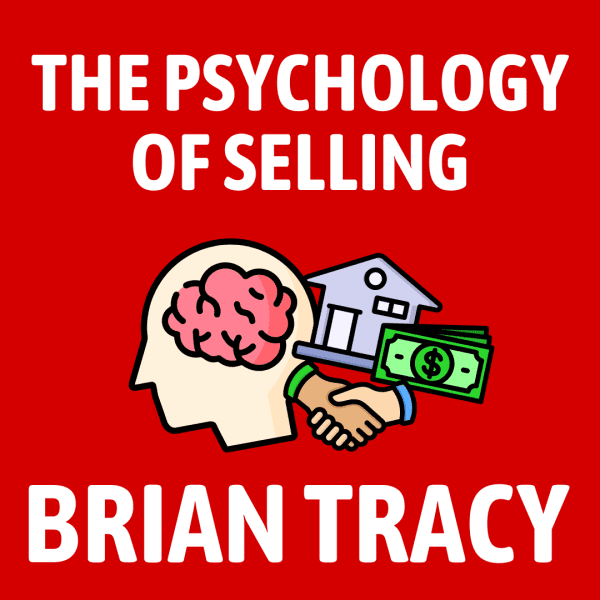
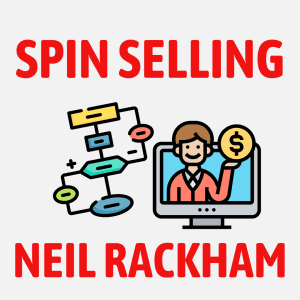

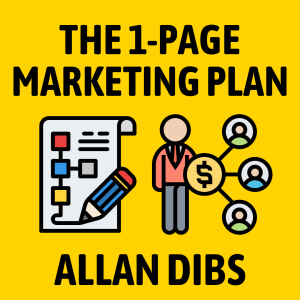



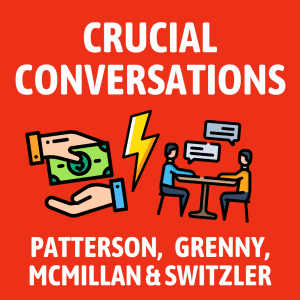
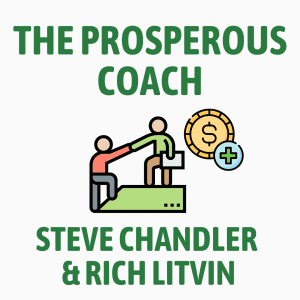
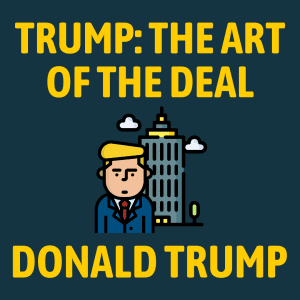
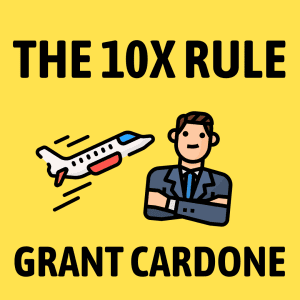












Community Notes